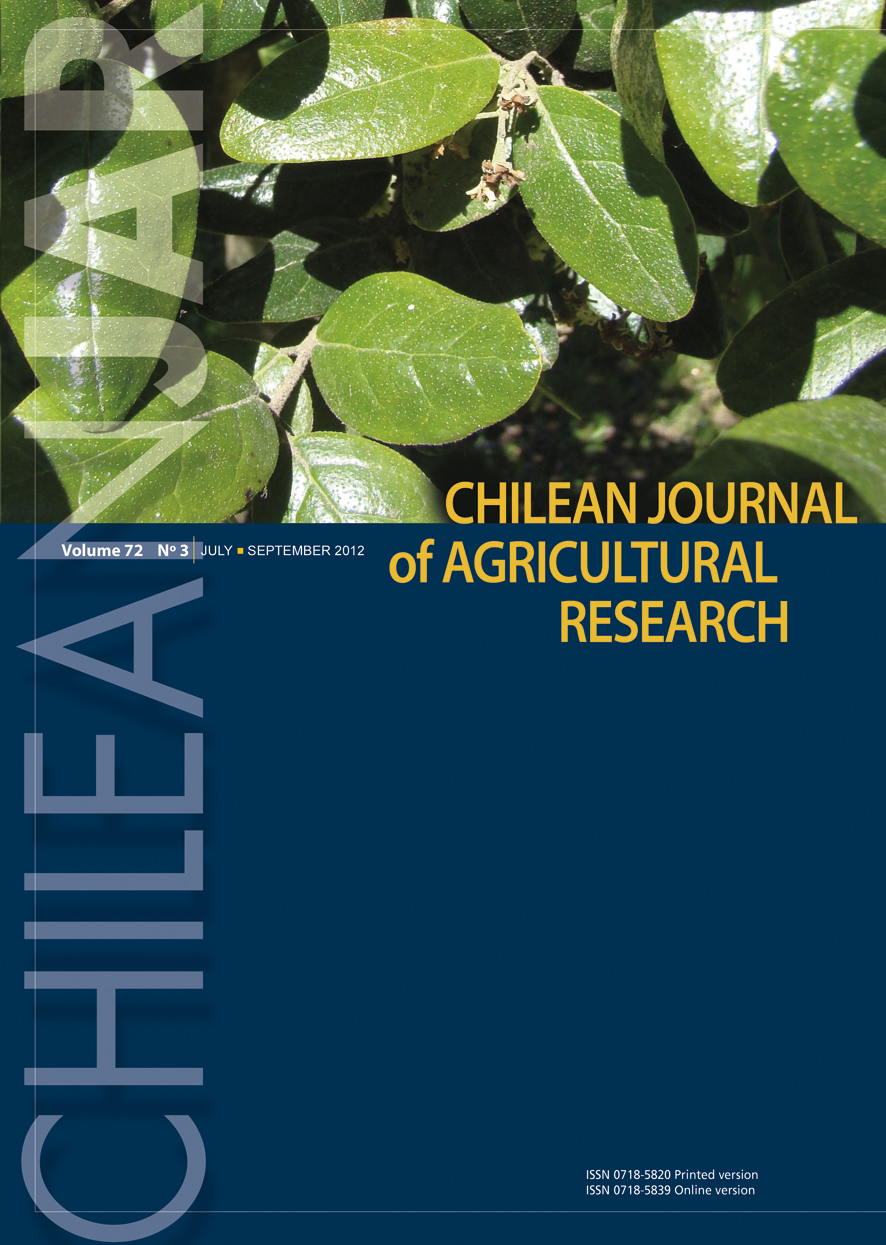
|
Chilean Journal of Agricultural Research
Instituto de Investigaciones Agropecuarias, INIA
ISSN: 0718-5820
EISSN: 0718-5820
Vol. 79, No. 3, 2019, pp. 347-355
|
 Bioline Code: cj19035
Bioline Code: cj19035
Full paper language: English
Document type: Research Article
Document available free of charge
|
|
|
Chilean Journal of Agricultural Research, Vol. 79, No. 3, 2019, pp. 347-355
| en |
Latex quality and yield parameters of Hevea brasiliensis  (Willd. ex A. Juss.) Müll. Arg. clone PB 260 for different tapping and stimulant application frequencies (Willd. ex A. Juss.) Müll. Arg. clone PB 260 for different tapping and stimulant application frequencies
Purwaningrum, Yayuk; Asbur, Yenni & Junaidi
Abstract
Tapping and stimulant applications are an attempt to increase latex yield. A combination of stimulants with low intensity tapping systems was expected to reduce tapping costs. In addition, it was necessary to regulate the stimulant application frequency based on type and potential clone production. The objective was to determine the effect on physiological parameters and latex yield of Hevea brasiliensis (Willd. ex A. Juss.) Müll. Arg. clone PB 260 for different tapping and stimulant application frequencies. The study design was split block in randomized complete block plots with three replicates and two factors. The main plot was the tapping system consisting of four levels: quarter-spiral downward tapping (S/4 d3), quarter-spiral upward tapping (S/4U d3), half-spiral downward tapping (S/2 d3), and half-spiral upward tapping (S/2U d3). The subplots were four stimulant application frequencies consisting of ethephon 2.5% applied once every 15 d (ET 15d) and gas stimulant (equal to ± 100% ethylene) applied once every 9 d (ETG 9d), once every 18 d (ETG 18d), and once every 27 d (ETG 27d). The highest sucrose levels (3.62 mM) were obtained in S/2 d3 and ET/15d combination. The highest inorganic P content (27.68 mM) was in S/2 d3 and ETG/18d. The highest yield (2418.53 kg ha-1 yr-1) was in S/4d3 and ETG/18d. The tapping system S/4d3 and ETG/18d combination was able to increase production by 102.26% compared with the conventional tapping system (S/2 d3 and ET/15d). After the 1-yr trial, all treatments showed 0.47 to 0.54 mM thiol content, which indicated that plants did not experience over-exploitation stress.
Keywords
Ethephon; ethylene gas; inorganic phosphorus; rubber tree; sucrose; thiol.
|
| |
© Copyright 2019 - Chilean Journal of Agricultural Research
Alternative site location: http://www.inia.cl
|
|
